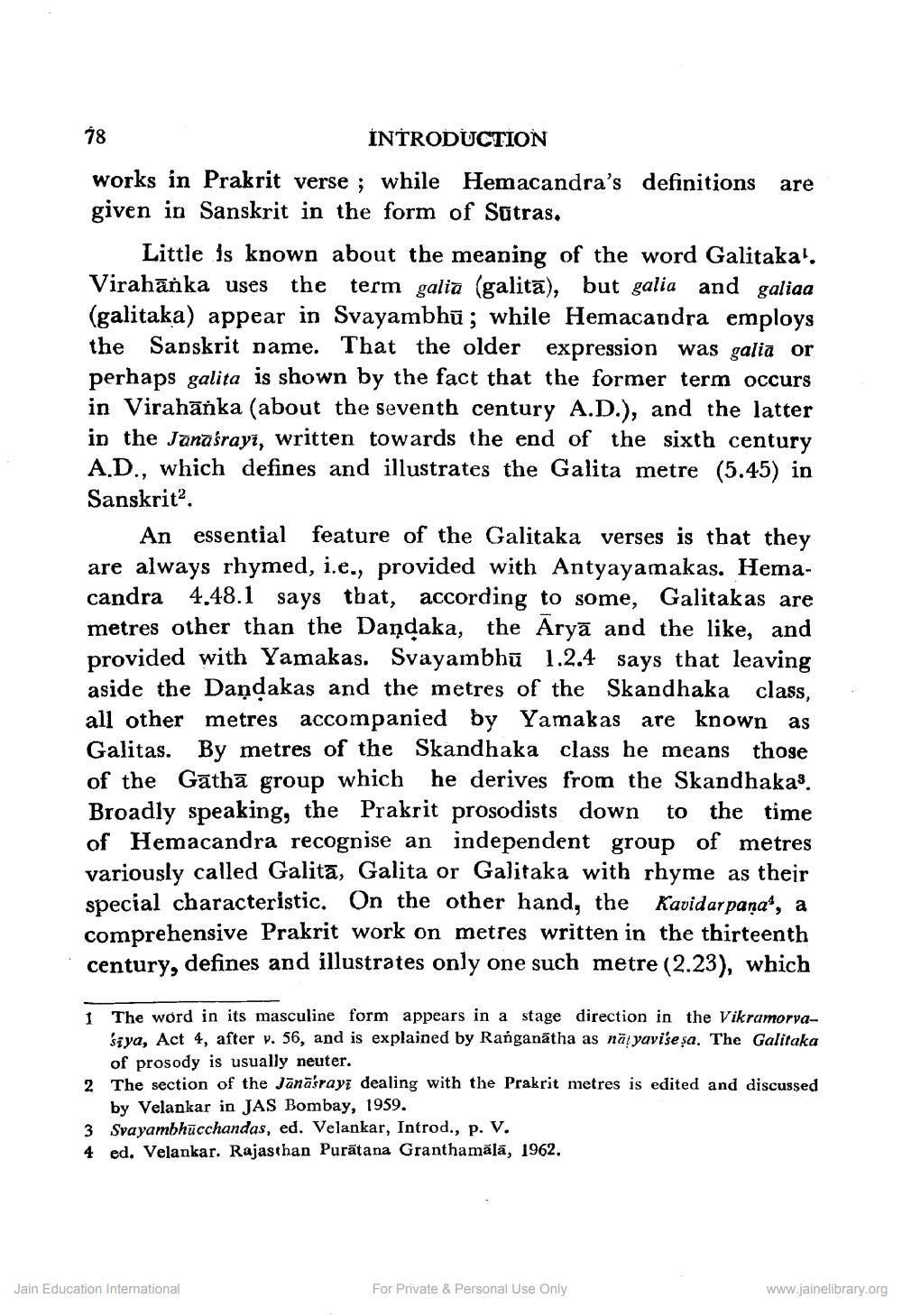________________
48
INTRODUCTION works in Prakrit verse ; while Hemacandra's definitions are given in Sanskrit in the form of Sūtras.
Little is known about the meaning of the word Galitakal. Virahānka uses the term galia (galitā), but galia and galiaa (galitaka) appear in Svayambhū; while Hemacandra employs the Sanskrit name. That the older expression was galia or perhaps galita is shown by the fact that the former term occurs in Virahānka (about the seventh century A.D.), and the latter in the Janaśrayż, written towards the end of the sixth century A.D., which defines and illustrates the Galita metre (5.45) in Sanskrit.
An essential feature of the Galitaka verses is that they are always rhymed, i.e., provided with Antyayamakas. Hemacandra 4.48.1 says that, according to some, Galitakas are metres other than the Dandaka, the Aryā and the like, and provided with Yamakas. Svayambhū 1.2.4 says that leaving aside the Daņdakas and the metres of the Skandhaka class, all other metres accompanied by Yamakas are known as Galitas. By metres of the Skandhaka class he means those of the Gāthā group which he derives from the Skandhakas. Broadly speaking, the Prakrit prosodists down to the time of Hemacandra recognise an independent group of metres variously called Galitā, Galita or Galitaka with rhyme as their special characteristic. On the other hand, the Kavidar paņa", a comprehensive Prakrit work on metres written in the thirteenth century, defines and illustrates only one such metre (2.23), which
1 The word in its masculine form appears in a stage direction in the Vikramorva
siya, Act 4, after v. 56, and is explained by Ranganatha as nāļyavi'se șa. The Galitaka
of prosody is usually neuter. 2 The section of the Jānāsrayz dealing with the Prakrit metres is edited and discussed
by Velankar in JAS Bombay, 1959. 3 Svayambhūcchandas, ed. Velankar, Introd., p. V. 4 ed. Velankar. Rajasthan Purātana Granthamālā, 1962.
Jain Education International
For Private & Personal Use Only
www.jainelibrary.org




